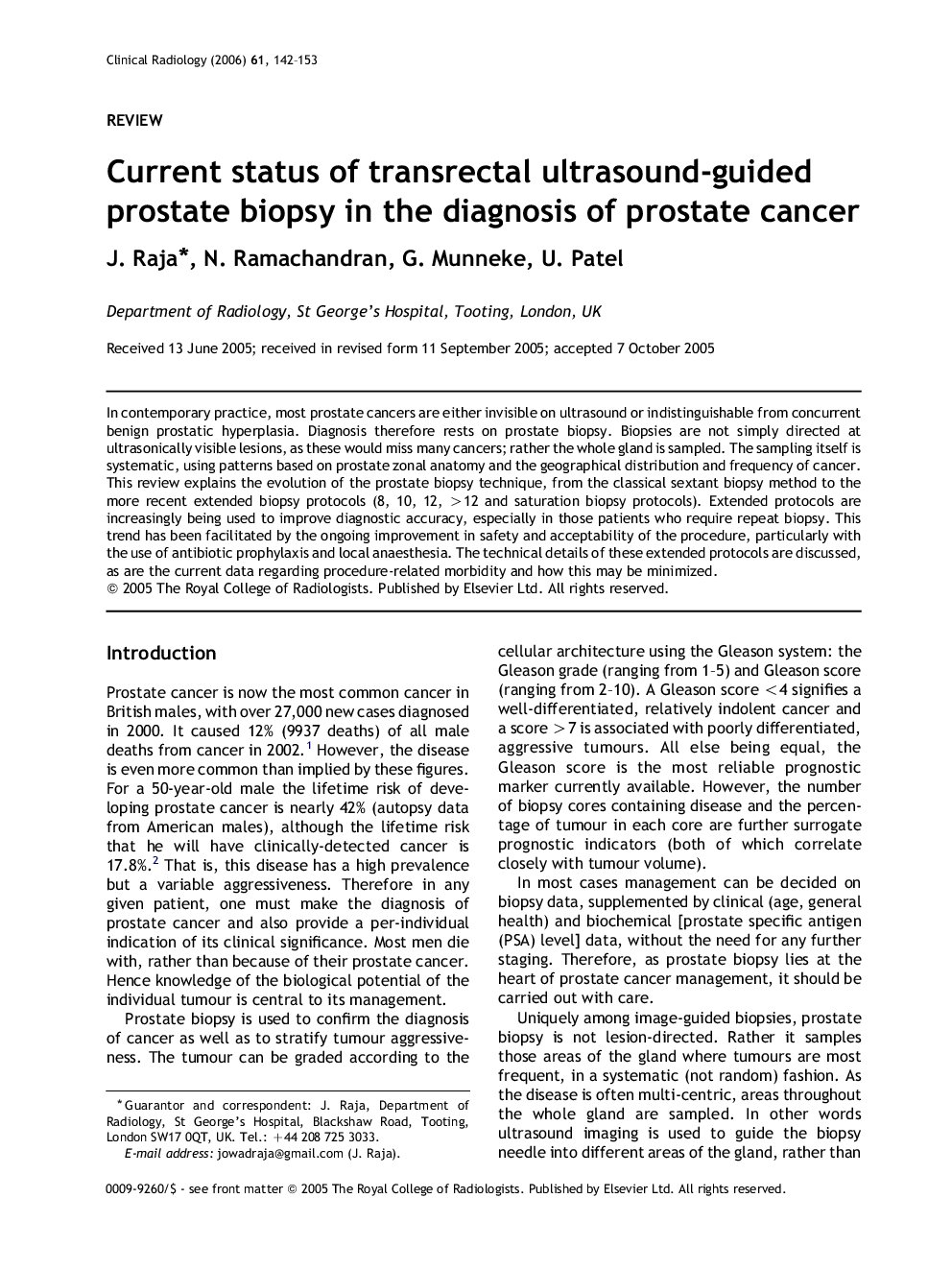| Article ID | Journal | Published Year | Pages | File Type |
|---|---|---|---|---|
| 3983959 | Clinical Radiology | 2006 | 12 Pages |
In contemporary practice, most prostate cancers are either invisible on ultrasound or indistinguishable from concurrent benign prostatic hyperplasia. Diagnosis therefore rests on prostate biopsy. Biopsies are not simply directed at ultrasonically visible lesions, as these would miss many cancers; rather the whole gland is sampled. The sampling itself is systematic, using patterns based on prostate zonal anatomy and the geographical distribution and frequency of cancer. This review explains the evolution of the prostate biopsy technique, from the classical sextant biopsy method to the more recent extended biopsy protocols (8, 10, 12, >12 and saturation biopsy protocols). Extended protocols are increasingly being used to improve diagnostic accuracy, especially in those patients who require repeat biopsy. This trend has been facilitated by the ongoing improvement in safety and acceptability of the procedure, particularly with the use of antibiotic prophylaxis and local anaesthesia. The technical details of these extended protocols are discussed, as are the current data regarding procedure-related morbidity and how this may be minimized.
